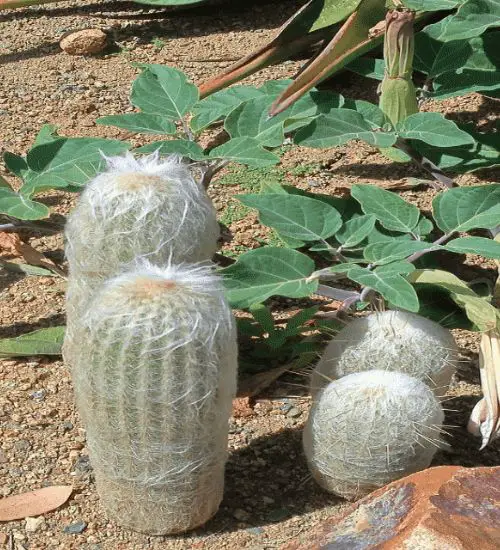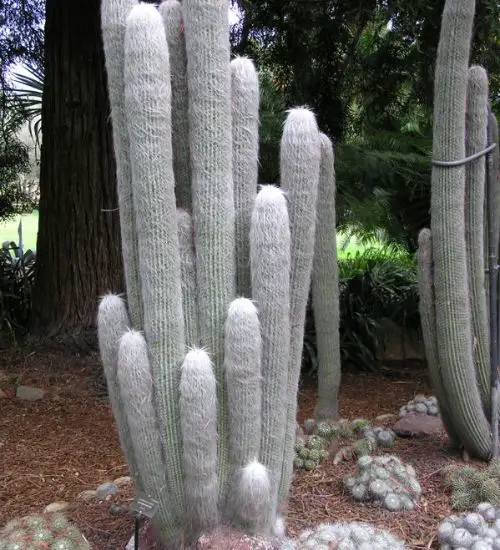Sun: full sun
Water: Typical water needs for a succulent
Temperature: Zone 10a from 30° F to 35° F (-1.1 ° C to 1.7° C)
Winter Survival: Not cold hardy
Propagation: seeds
Flower: rarely, in the late spring and summer
Flower Type:
Toxic: Generally non-toxic to humans and animals
Dormant: winter
Space Requirement: Indoors & Outdoors
Common Problems: Plants may rot if overwatered, pests
Where to buy Cephalocereus senilis?
Basc Care for Cephalocereus senilis
Watering
Regular watering period should be every 2 weeks
What you need to remember is that this type of succulents needs to be watered for every 2 weeks
Fertilizing
Only feed this succulent during its active growing seasons which means spring and fall. Use the right fertilizer applied in the right amounts. Applying half-strength balanced fertilizer every month or so is recommended for optimal results.
Do not fertilize during winter as the plant is dormant.
Sun & Location Requirements for "Old Man Cactus"
Cephalocereus senilis requires full sun for optimal growth and health. Place your succulent in a sunny spot in your garden or on a windowsill to ensure it's getting enough light. You'll know that the succulent is receiving enough sunlight if its leaves are bright green and firm.
In order to protect Cephalocereus senilis from freezing temperatures, it is important to provide adequate insulation and drainage. A layer of mulch or gravel will help protect the roots by keeping them warm during cold weather. In addition, protection from wind and sun exposure can help reduce the chances of frost damage.
Any succulents in the group will need a medium space to grow. You can place your pot at your table or window. Since this plant needs more space than mini succulents, you should consider do not plant them together with other succulents/plants.
Cephalocereus senilis also benefits from some indirect light throughout the day as well, so make sure you give it enough space to soak up light without becoming too exposed to heat.
Propagation
Cephalocereus senilis propagates easily from seeds, however it's important to look for healthy ones which are plump, dark in color and slightly sticky when touched. To start the propagation process, mix a soil mixture with well-draining potting mix then sow the seeds evenly and press them lightly into the surface. Finally, water the soil using a spray bottle and place it in bright but indirect light to ensure germination.
Toxicity

Cephalocereus senilis is generally non-toxic to humans and animals. However, the plant may contain certain toxins which can cause mild skin irritation if it is ingested or comes in contact with skin. Therefore, it is important to keep the plant away from children and pets for safety reasons.
Pests and Diseases
Cephalocereus senilis can be affected common pests and diseases like most of the other succulents such as mealybugs, scale insects, and Red spider mites.
If you do spot any of pest signs, you can treat your succulent using below methods.
- Mealybugs: quarantine, clean infected plants, soapy water.
- Scale insects: quarantine, clean infected plants, soapy water.
- Red spider mites: Quarantine, clean your infected plants, treatment with a systemic insecticidal/soapy water.
Besides that, to prevent serious health issues from happening, keep your succulent in a well-ventilated area and check it regularly for any signs of pests or health problems.


